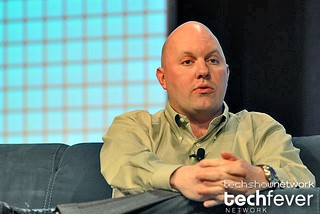We did a double-take when we saw this headline on Bloomberg last week: “BuzzFeed Said to Expect 2014 Sales of Up to $120 Million.” If you haven’t paid much attention to BuzzFeed, now is a good time to start, because this seven-year-old dark horse may have figured out the secret to making money in an environment of brutal competition and plummeting advertising prices.
The story relates some impressive statistics:
- BuzzFeed expects to book $60 million in revenue this year, up from an initial budget of $40 million.
- Year-over-year traffic is up fourfold.
- The site attracted more than 130 million unique visitors in November.
- BuzzFeed expects to field more than 600 ad campaigns this year.
- It has raised $46 million.
- It’s profitable.

Image via CrunchBase
Casual visitors to BuzzFeed might be tempted to dismiss the site as just another collection of top-10 lists. That’s understandable, given that top stories bear names like, “The 28 Funniest Notes Written By Kids In 2013,” but there’s more to BuzzFeed than mouse candy.
The site was founded by Jonah Peretti (right), an MIT Media Lab alumnus who also co-founded Huffington Post. Peretti has made a career of figuring out how to make stuff that people want to share, and his latest venture appears to have cracked the code (For more on the new journalism discipline of writing for maximum share appeal, read this article).
Everything on BuzzFeed is optimized for sharing because that’s the secret to building traffic. BuzzFeed eschews traditional search engine optimization. “We don’t spend that much time thinking about search,” Peretti told Fortune in this interview. It focuses instead on the psychology of sharing: What content do people instinctively want to tell others about? In the long run, Peretti thanks sharing by humans will be a more important factor in online success than search results.
Unlike some other content farms, BuzzFeed has designs on serious journalism. Peretti has said he plans to hire 200 professional journalists, and the site’s news section is beginning to look more and more like what CNN used to. In essence, the cat videos and wet T-shirt slide shows bring in visitors s
o serious reporting can happen.
BuzzFeed is perhaps best known for its novel approach to native advertising. Sponsored content appears in line with staff material (it’s lightly labeled) and uses the same format as everything else on the site: lots of lists, photos and captions. Sponsors are encouraged to come up with creative ideas that will fit the look and feel of the site. Intel has 10 Pieces Of Vintage Technology We Couldn’t Wait To Have and Ruffles came up with 12 Reasons Dogs Really Are Man’s Best Friend. Peretti told Fortune:
We told brands, “You have to tell a story.” This is actually something the magazine industry has been great at over decades — making advertising that actually adds to the product. It’s something that websites have completely failed to do…If you take all of the ads out of a fashion magazine, you lose half the photography, you know? So we really took the approach of, “Well, why can’t the web be like that? Why can’t we make great branded content, advertising, that has its own page that people want to click on and engage in and share and interact with?”
This may sound like heresy to journalism traditionalists, but BuzzFeed is breaking a lot of molds in an attempt to find a model that works.
In fact, the site’s basic content model isn’t all that different from traditional newspapers’. The reason most newspapers carry horoscopes, crossword puzzles, comics and gossip columns is because large numbers of people read newspapers solely for those features. If BuzzFeed’s 21st-century version of Dear Abby can provide some serious journalists with gainful employment, then we all owe Jonah Peretti a debt of gratitude.
Media Boomlet
BuzzFeed isn’t the only new media entity that’s benefiting from the aggregation craze, but there are questions about how far this business can scale and whether there’s much money to be made.
 USA Today‘s Michael Wolff writes that Henry Blodget (left) is shopping Business Insider, reportedly asking a cool $100 million. Not bad for a site that’s less than five years old with just 62 editorial staff members listed on its masthead. Wolff runs the numbers, makes a couple of educated guesses and figures that Business Insider is probably getting a CPM (cost per thousand) of between $1.50 and $3. That compares to $30-$40 CPMs that were common in the business magazine world just a few years ago.
USA Today‘s Michael Wolff writes that Henry Blodget (left) is shopping Business Insider, reportedly asking a cool $100 million. Not bad for a site that’s less than five years old with just 62 editorial staff members listed on its masthead. Wolff runs the numbers, makes a couple of educated guesses and figures that Business Insider is probably getting a CPM (cost per thousand) of between $1.50 and $3. That compares to $30-$40 CPMs that were common in the business magazine world just a few years ago.
Wolff sees the mass-market digital media landscape as being a race to the bottom, with publishers frantically searching for viewer eyeballs, regardless of their appeal to advertisers. “The digital traffic world, with techniques and sources and results that are ever-more dubious, is, as I’d guess the astute Henry Blodget has ascertained, not a sound long-term play,” he writes. Hence, it’s time to get out.
But the venture capital community, which is flush with stock market cash, apparently doesn’t agree – yet. CNN Money’s Dan Primack and Jessi Hempel say Flipboard is set to raise another $50 million, bringing to $160 million its total venture funding since 2010. Flipboard doesn’t even produce any original content. It’s a mobile platform that aggregates content produced by other media companies, and its licensing policies have raised some hackles.
The new high-volume aggregation model that’s attracting so much attention was outlined in The New York Times last year. It’s a caffeinated rush to get it first, and very little content comes from traditional journalistic shoe leather. Reporters are skilled at finding, assimilating and repackaging information in eye-catching packages. The assumption is that citizens are already doing a lot of the reporting on their Facebook timelines and Twitter feeds, and the media company that can be filter the noise adds significant value.






























